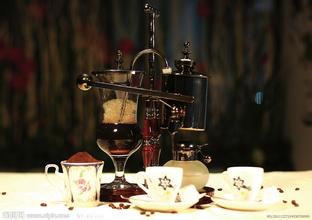The Social Evolution of Coffee roasting: renewed attention to quality

All in all, let's look back at the social evolution of coffee roasting and then see the amazing evolution of the twentieth century.
Although pre-baked coffee beans / pre-ground coffee powder marketed by brands were very popular in industrialized European and American countries in the first half of the 20th century, the tradition of fresh baking at home persisted. In southern Europe, until the 1960s, many people still baked their daily coffee beans at home; even in the United States, some small baked cafes survived in urban neighborhoods.
After the 1960s, a wave of pursuit of convenience and standardization took off. Branded coffee beans were the main commodity in the urbanized world around the 1960s. At this time, there are not only pre-roasted coffee beans, pre-ground coffee powder, and even instant coffee powder cooked for you in advance. As far as I can remember, in the two most famous coffee producing areas in the world that I visited in the 1970s, I found that the coffee drinks served in the cafes and restaurants in these two areas were only instant coffee. At that time, most Americans and Europeans (now called pure consumers) had almost forgotten that coffee beans could be roasted at home, or even that coffee beans could be bought and ground at home. The impression of "coffee" on people at that time (even in dreams) was probably limited to the round bottles and cans, or the familiar logo patterns on the sides of the bottles and cans.
The simple process of self-baking coffee beans at home has become a lost art at this time, with only a few departmentalists in a handful of commercial bakeries, or in a few closed suburban societies where consumption is a consideration (neither because of habit nor because of tradition).
Because the price of canned coffee is not high, and can enjoy the taste of coffee, canned coffee became the most popular commodity at that time. And because at that time various manufacturers took canned coffee as the main price-cutting competitive commodity, although it had colorful and gorgeous packaging, the quality could be expected to decline very seriously. At the end of World War II, canned coffee, which used to taste rich, was very empty and stale in the 1960s.
During this period, it is said that, as the author mentioned in the first chapter, the history of coffee roasting has entered a new stage, in a coffee market full of disposable and convenient, but at the expense of quality and mainstream changes, there are a small number of small self-roasting cafes based on the United States and other industrialized countries at that time, coffee quality was gradually ignored by consumers, so they formed an organization to revive coffee quality.
This revival movement is called the Fine Coffee campaign (Specialty-Coffee Movement). So by the end of the 20th century, coffee roasting and sales changed to its original form: people bought coffee beans in bulk and ground their own coffee before brewing it. Perhaps the United States, the country that led the world to convenient consumption of coffee, will lead the world back to the less convenient but guaranteed quality of the past.
Important Notice :
前街咖啡 FrontStreet Coffee has moved to new addredd:
FrontStreet Coffee Address: 315,Donghua East Road,GuangZhou
Tel:020 38364473
- Prev

Taste is supreme: we won't know until we taste it.
Maybe you are very patient to follow the steps mentioned above, or maybe you simply skip the direct operation. No matter which of the two you are, you will find that the application of these instruments can evolve from the baking method that relies entirely on the baker's own intuitive system (memory and sensory nerve conduction) to more complex but more accurate data.
- Next

The style and uniqueness of a small cafe
In many ways, Starbucks combines the idealism of quality considerations in the boutique coffee movement, as well as strong corporate strength and discipline. But Starbucks doesn't represent the whole coffee world! At least in the 21 century, Starbucks lacked the style and uniqueness of general regional cafes, which baked and sold what they thought.
Related
- Beginners will see the "Coffee pull flower" guide!
- What is the difference between ice blog purified milk and ordinary milk coffee?
- Why is the Philippines the largest producer of crops in Liberia?
- For coffee extraction, should the fine powder be retained?
- How does extracted espresso fill pressed powder? How much strength does it take to press the powder?
- How to make jasmine cold extract coffee? Is the jasmine + latte good?
- Will this little toy really make the coffee taste better? How does Lily Drip affect coffee extraction?
- Will the action of slapping the filter cup also affect coffee extraction?
- What's the difference between powder-to-water ratio and powder-to-liquid ratio?
- What is the Ethiopian local species? What does it have to do with Heirloom native species?

